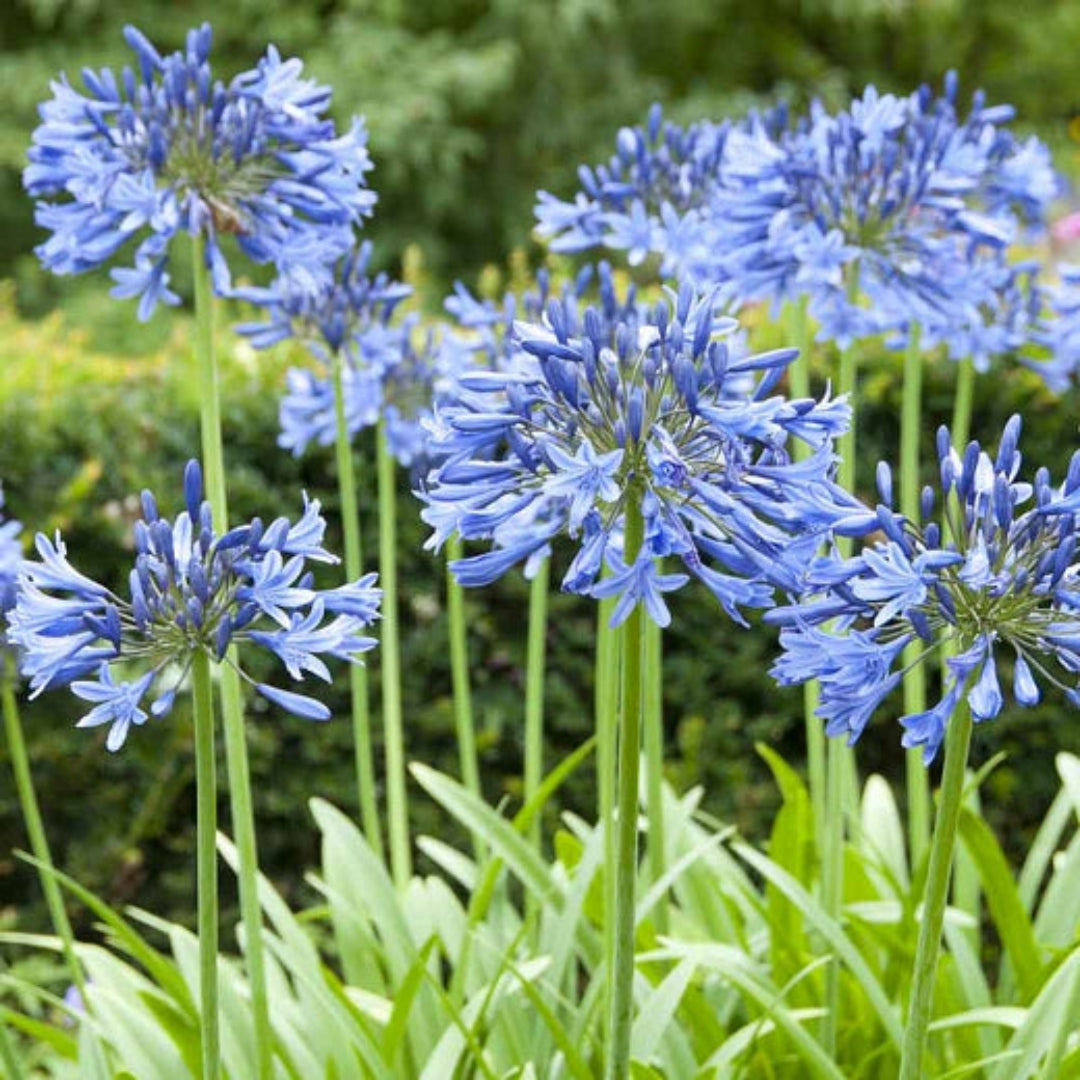Unleashing the Secret to Effective Agapanthus Farming: Tips and Techniques for a Flourishing Garden
In the world of horticulture, cultivating agapanthus efficiently calls for a calculated method that incorporates different facets of plant treatment. With careful focus to detail, one can unlock the keys to supporting these magnificent blossoms, resulting in a garden that grows with charm and vibrancy. By recognizing the subtleties of agapanthus farming, one can produce an environment where these plants prosper and grow generously. In the complying with discussion, we will certainly check out necessary suggestions and methods that will certainly lead you towards a flourishing agapanthus yard, supplying insights right into finest methods, soil problems, watering techniques, and more.
Growing Agapanthus: Best Practices
When planting Agapanthus, proper soil preparation is crucial for guaranteeing successful growth and development of these lovely blossoms. Agapanthus, generally called Lily of the Nile or African lily, flourishes in well-draining soil with a slightly acidic to neutral pH degree - Agapanthus. Prior to growing, it is vital to change hefty clay dirts with natural issue such as garden compost or peat moss to boost water drainage and give crucial nutrients for the plants
To plant Agapanthus, choose a location that receives full sunlight to partial color, as this will certainly promote healthy growth and plentiful flowering. Dig a hole twice the size of the plant's root round and put the Agapanthus at the same depth it was previously expanding. Gently backfill the opening with soil, weighing down securely to get rid of any type of air pockets around the origins.
Water the recently grown Agapanthus completely and proceed to keep the dirt uniformly moist, specifically during the plant's energetic expanding period. Agapanthus. Using a well balanced fertilizer once a month can additionally sustain the plant's growth and flowering. By adhering to these best techniques for growing Agapanthus, you can produce a magnificent display screen of these exciting flowers in your yard
Perfect Soil Issues for Agapanthus
For optimal development and blooming success of Agapanthus plants, making sure the dirt conditions are excellent is critical. Agapanthus favors soil that is abundant in nutrients, so incorporating a balanced plant food throughout the expanding season can promote healthy development and dynamic blooms.

Watering and Feeding Tips
To make sure healthy and balanced development and vibrant blooms, proper watering and fertilizing methods are important for successful Agapanthus farming. Agapanthus plants gain from routine watering, particularly during the growing season. It is advised to water deeply once a week, making sure the dirt is damp but not waterlogged. During warm weather or in pots, even more constant watering might be required to avoid the dirt from drying out totally.
When it pertains to feeding Agapanthus, a balanced plant food with equal parts nitrogen, phosphorus, and potassium can be applied in the spring to advertise healthy growth and blooming. Slow-release plant foods are optimal for supplying get more nutrients slowly over an extensive duration. Prevent over-fertilizing, as this can bring about excessive foliage growth at the expenditure of blossoms.
In addition, incorporating raw material like compost right into the dirt can enhance nutrient levels and enhance dirt framework, helping in the total health and wellness of the Agapanthus plants. By following these watering and feeding suggestions, gardeners can guarantee their Agapanthus plants flourish and generate magnificent screens of blossoms.
Trimming and Deadheading Techniques
Proper pruning and deadheading methods play a critical duty in maintaining the health and appearances of Agapanthus plants, matching the vital techniques of watering and fertilizing for effective cultivation. Trimming Agapanthus entails removing invested blossom heads, yellowing or dead leaves, and total shaping of the plant to advertise much better growth. Deadheading, the process of removing faded blossoms, not only boosts the plant's look yet likewise motivates more growing.
When deadheading Agapanthus, it is a good idea to snip off the flower stem at the base utilizing sharp, clean shears. This procedure redirects the plant's power from seed production back into origin and vegetation development, learn the facts here now promoting a much healthier and a lot more robust plant. Regular deadheading can prolong the growing duration of Agapanthus and protect against self-seeding, which can bring about congestion.
In terms of trimming, Agapanthus generally take advantage of a light trim after blooming to clean up the plant and motivate fresh development. Cutting down the spent blossom stems and eliminating any kind of dead or damaged vegetation aids keep the plant's vitality and overall appearance. However, it is vital to avoid reducing into the crown of the plant, as this can compromise its wellness.

Protecting Agapanthus From Pests and Diseases
Executing effective parasite and disease management approaches is important to safeguarding the wellness and vigor of Agapanthus plants in farming. One usual parasite that impacts Agapanthus is the Agapanthus borer, a caterpillar that tunnels right into the plant, creating damage to the fallen leaves and flowers.
In enhancement to parasites, Agapanthus are at risk to conditions such as origin rot and fungal leaf areas. By staying attentive and addressing pest and condition problems quickly, gardeners can assist their Agapanthus grow and prosper.
:max_bytes(150000):strip_icc()/agapanthus-growing-guide-7368912_hero-a3585e4f9ffe4b99a73c7ad8eb4ebe48.jpg)
Final Thought
In conclusion, effective cultivation of agapanthus calls for appropriate growing methods, suitable dirt problems, ample watering and fertilizing, routine pruning and deadheading, and protection from diseases and bugs. By complying with these pointers and methods, garden enthusiasts can make certain a growing yard filled up with beautiful agapanthus flowers. Agapanthus. Remember to preserve constant treatment and focus to information to advertise the wellness and longevity of these spectacular plants
When growing Agapanthus, proper dirt preparation is vital for guaranteeing successful growth and development of these stunning blossoms.Water the newly planted Agapanthus extensively and continue to maintain the dirt equally wet, specifically during the plant's active growing period.For ideal development and blooming success of Agapanthus plants, guaranteeing the soil problems are suitable visit this website is vital. When transplanting or planting Agapanthus, make sure the dirt is well-prepared to provide the needed foundation for the plants to develop themselves effectively. One common bug that affects Agapanthus is the Agapanthus borer, a caterpillar that tunnels into the plant, creating damages to the fallen leaves and flowers.